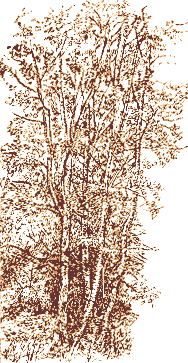
|
Stocksmoor CommonSunday, 13th July 2003, West Yorkshire |
![]()
![]()
![]()
![]() Rocks | History |
Workshop |
Links | Home
Page
Rocks | History |
Workshop |
Links | Home
Page
![]()
 In
the 1960s and early 70s it was still possible to see red squirrels
at Stocksmoor Yorkshire Wildlife Trust nature reserve,
at Midgley, five miles south east of Wakefield; unfortunately they seem
to be long gone throughout the area.
In
the 1960s and early 70s it was still possible to see red squirrels
at Stocksmoor Yorkshire Wildlife Trust nature reserve,
at Midgley, five miles south east of Wakefield; unfortunately they seem
to be long gone throughout the area.
With the recent rains and warm weather Stocksmoor, like the rest of the countryside, looks lush and overgrown today. Brambles thrust prickly trip wires across the woodland path. More seriously the open area, which is recognised as a Site of Scientific Interest because it is a rare example of grassland on coal measures soils, is also sporting a lush growth of grasses and waist-high wildflowers. Bracken appears to be spreading down a gentle slope.
 Back
in the 1960s, David Proctor, a local naturalist, recalls, there were half
a dozen gorse bushes here, each with a pair of linnets nesting in it.
That's the way I vaguely remember it from an evening walk up here with
a primary school group. I didn't see any gorse today. Birches are spreading
from the surrounding woodland steadily converting grassland into woodland.
Back
in the 1960s, David Proctor, a local naturalist, recalls, there were half
a dozen gorse bushes here, each with a pair of linnets nesting in it.
That's the way I vaguely remember it from an evening walk up here with
a primary school group. I didn't see any gorse today. Birches are spreading
from the surrounding woodland steadily converting grassland into woodland.
Stocksmoor Common had a history of rough treatment, with grazing and, a hundred years ago or more, coal mining. Mineral extraction would be a very drastic way of keeping the habitat open but controlled grazing, perhaps with sheep, is something that has been considered for a while. In the meantime an annual mowing helps keep the spread of the birch in check.
 To
end on a success story for Stocksmoor: a new pond at the edge of the grassland
is attracting a variety of dragonflies including today in the warm sunshine
an Emperor Dragonfly patrolling the pond at rush-top
height.
To
end on a success story for Stocksmoor: a new pond at the edge of the grassland
is attracting a variety of dragonflies including today in the warm sunshine
an Emperor Dragonfly patrolling the pond at rush-top
height.
![]()
![]() Next page | Previous page |
This day in
2000 | This month |
Nature Diary |
Home
Page
Next page | Previous page |
This day in
2000 | This month |
Nature Diary |
Home
Page
![]()